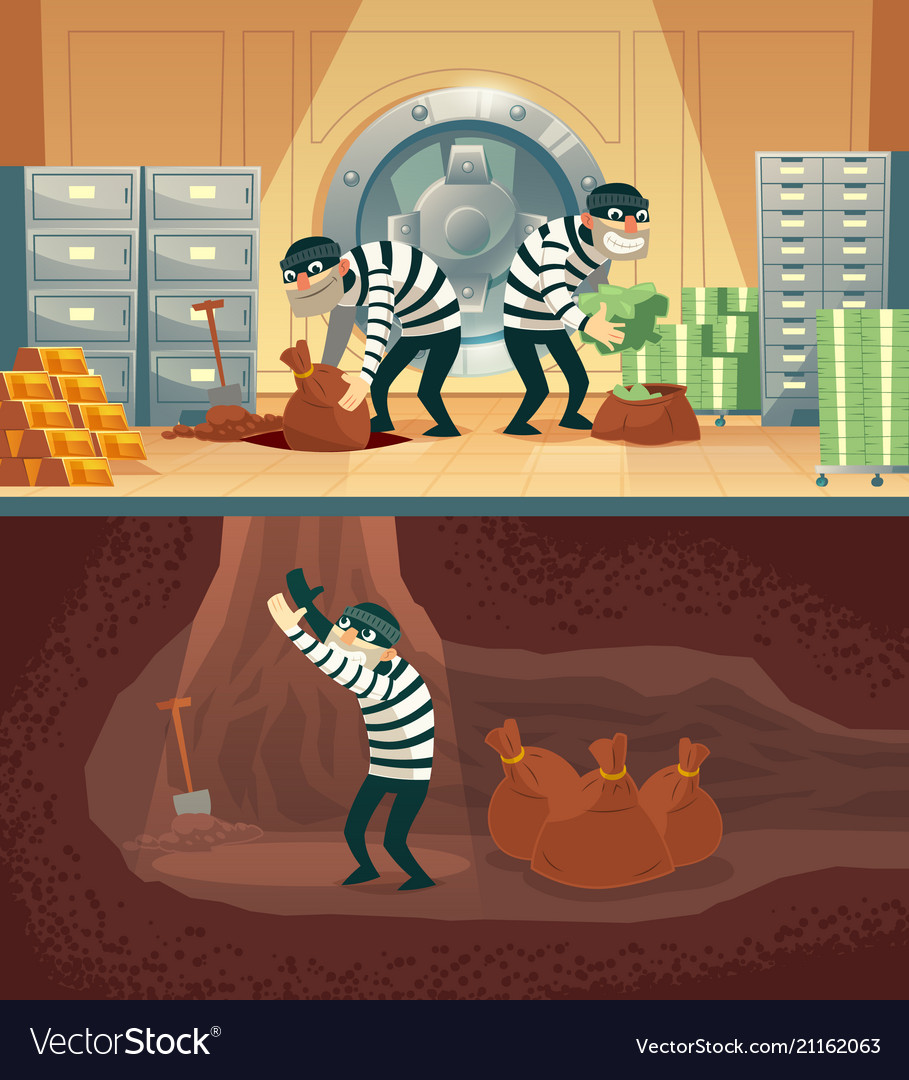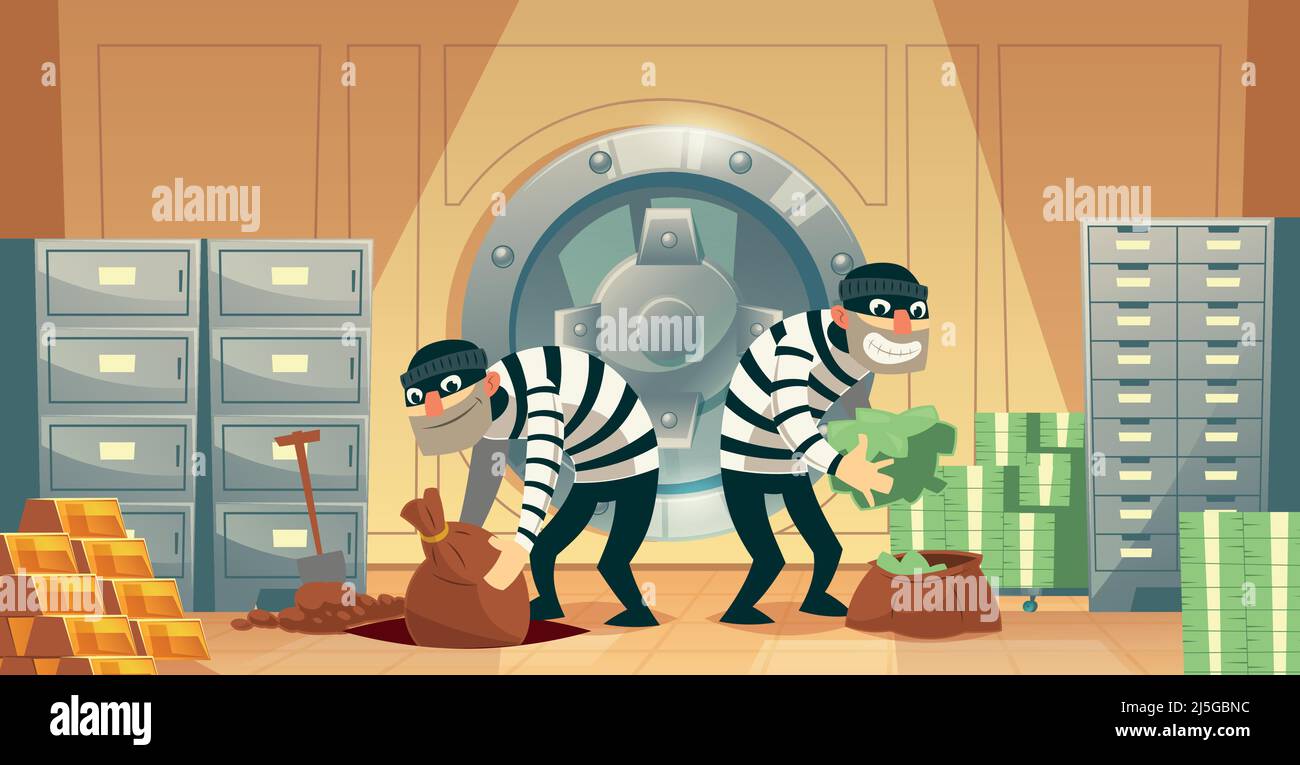
The Allure of the Vault: From Wild West Outlaws to Digital Phantoms
The image is etched into our collective consciousness: a masked figure, gun in hand, striding purposefully into a bank, demanding money. It’s a scene replayed countless times in cinema, literature, and even in the wild narratives of history. Bank robbers and thieves occupy a unique, often romanticized, space in the public imagination, embodying a daring defiance against authority and a shortcut to unimaginable wealth. But beyond the cinematic flair and the audacious headlines, what is the reality of these figures? From the horseback bandits of the Old West to the sophisticated cybercriminals of today, the world of bank theft is a complex tapestry woven with desperation, ingenuity, violence, and an ever-evolving cat-and-mouse game with law enforcement.
The Golden Age of the Outlaw: When Banks Were Bricks and Mortar

For much of history, a bank was a physical fortress, its vault the ultimate prize. The American Wild West, emerging from the chaos of the Civil War, provided fertile ground for the first legends of bank robbery. Men like Jesse James and his gang, often former Confederate guerrillas, targeted banks and trains, becoming folk heroes to some, seen as avenging angels against the Union and the encroaching industrial age. Their exploits, though brutal and often deadly, were sensationalized by dime novels, painting them as daring anti-heroes rather than common criminals.
Fast forward to the Great Depression of the 1930s, and bank robbery experienced a second, even more prominent, golden age. As ordinary Americans faced destitution, figures like John Dillinger, Bonnie Parker and Clyde Barrow, "Pretty Boy" Floyd, and "Ma" Barker became public enemies but also, for a desperate populace, symbols of rebellion against the institutions perceived to have failed them. Dillinger, in particular, with his slick suits, audacious escapes, and a seeming disdain for the law, captured the nation’s imagination. His infamous quote, when asked why he robbed banks, "Because that’s where the money is," perfectly encapsulated the pragmatic, albeit illegal, logic of his profession. These were not just criminals; they were media sensations, their exploits followed avidly by a public hungry for drama and a taste of revenge against the powerful.
However, the reality for these outlaws was far from glamorous. Their lives were short, violent, and often ended in a hail of bullets. They lived on the run, constantly looking over their shoulders, with little time to enjoy their ill-gotten gains. The vast majority of their robberies netted surprisingly little cash, especially when divided amongst a gang. Their fame was built on fear and a romanticized narrative that overlooked the terror they inflicted on bank employees and customers, and the inevitable, bloody price they paid.
The Anatomy of a Heist: Planning, Execution, and the Human Cost
A successful bank robbery, even in its simplest form, requires a degree of planning and nerve. From casing the target to mapping escape routes, selecting weapons, and managing the adrenaline-fueled chaos of the act itself, it’s a high-stakes performance. Professional bank robbers, a rare breed, approach their craft with meticulous detail, studying security systems, shift changes, and the habits of their targets. Think of the 1997 Dunbar Armored car robbery in Los Angeles, still the largest cash robbery in US history, where $18.9 million was stolen by a group led by an insider who knew the facility’s layout intimately. This wasn’t a smash-and-grab; it was a carefully orchestrated operation.
But for every Dunbar, there are hundreds of botched attempts. The average bank robbery today is often a desperate, spur-of-the-moment act by an individual, not a sophisticated crew. They might be driven by addiction, a sudden financial crisis, or mental health issues. These "amateur" robberies are characterized by poor planning, visible faces, and a high likelihood of capture. The take is often minimal, sometimes just a few hundred dollars from a teller’s drawer.
Regardless of the scale, the human cost is immeasurable. For the tellers, managers, and customers caught in the crossfire, a bank robbery is a traumatic event that can leave lasting psychological scars. The fear, the uncertainty, the sudden invasion of a safe space – these are not easily forgotten. Many banks now offer trauma counseling for employees who have experienced a robbery, recognizing the profound impact of such an event.
Law Enforcement’s Evolving Game: The Cat-and-Mouse Chase

As robbers evolved, so too did law enforcement. The romanticized image of the lone sheriff chasing a gang on horseback gave way to the sophisticated machinery of the FBI. Formed in 1908, the Bureau’s powers expanded significantly during the Depression era specifically to combat the interstate crime wave epitomized by Dillinger and his ilk. They employed new techniques: fingerprinting, ballistic analysis, forensic science, and the systematic sharing of intelligence across state lines. The era of the "Public Enemy No. 1" was also the era of the modern federal crime-fighting agency.
Today, the physical bank robbery is a dying art, largely due to advancements in security and policing. Banks are equipped with high-resolution CCTV cameras, silent alarms, dye packs that explode on the stolen cash, GPS trackers hidden in money bundles, and biometric security. The presence of fewer tellers and less cash on hand, thanks to ATMs and digital transactions, also makes physical robberies less lucrative. The success rate for law enforcement in solving bank robberies is remarkably high, often exceeding 70-80%, due to the abundance of evidence and the relatively contained nature of the crime scene. Prison sentences are long and severe, serving as a powerful deterrent. The thrill of the heist, for most, is simply no longer worth the overwhelming risk.
The Digital Frontier: The New Thieves, The New Vaults
While the physical bank robber fades into history, the spirit of the thief endures, merely shifting its focus. The true "vaults" of the 21st century are no longer reinforced concrete and steel, but vast networks of data, accessible from anywhere in the world. The new bank robbers are cybercriminals: hackers, phishing specialists, ransomware operators, and sophisticated fraud rings.
These digital phantoms operate without masks or guns, their weapons are lines of code, their battlegrounds are servers, and their targets are the digital identities and financial accounts of billions. They don’t need to physically enter a bank; they can steal credit card numbers, empty bank accounts, or hijack entire financial systems from a keyboard thousands of miles away. Ransomware attacks on financial institutions, large-scale data breaches compromising customer information, and elaborate phishing scams designed to trick individuals into revealing their banking credentials are the modern equivalents of the bank heist.
The scale of these operations is staggering. Billions of dollars are lost annually to cybercrime globally, dwarfing the amounts stolen in physical robberies. The challenges for law enforcement are immense: tracking down perpetrators who operate across international borders, navigating complex digital trails, and keeping pace with rapidly evolving technologies used by criminals. The old game of chase is now a global, digital forensic hunt, requiring specialized skills and unprecedented international cooperation.
The Enduring Fascination
Despite the grim realities and the shift in methodology, the figure of the bank robber continues to fascinate. Perhaps it’s the allure of forbidden wealth, the vicarious thrill of breaking rules, or the fantasy of outsmarting the system. Hollywood, in particular, has played a significant role in perpetuating this myth, turning figures like Dillinger into cinematic heroes and crafting elaborate heist movies where the audience often roots for the thieves. From "Dog Day Afternoon" to "Heat" and "Ocean’s Eleven," these films tap into a primal human desire for freedom, wealth, and defiance, blurring the lines between good and evil.
Yet, the truth remains stark. Bank robbery, whether with a gun or a keyboard, is a crime with serious consequences. It inflicts financial harm, psychological trauma, and often leads to the loss of liberty for the perpetrator. The romanticized image is a dangerous illusion, masking the desperation, the violence, and the bleak outcomes that define the lives of those who choose to steal from the vault.
In conclusion, the era of the masked bandit bursting through swinging doors is largely over, a relic of a different time and a different kind of money. But the essence of the bank thief, driven by greed, desperation, or a misguided sense of rebellion, persists. The vaults may have changed from physical strongboxes to intricate digital networks, and the tools of the trade from revolvers to sophisticated algorithms, but the fundamental struggle between those who seek to take and those who seek to protect remains an enduring, if evolving, chapter in the human story.


